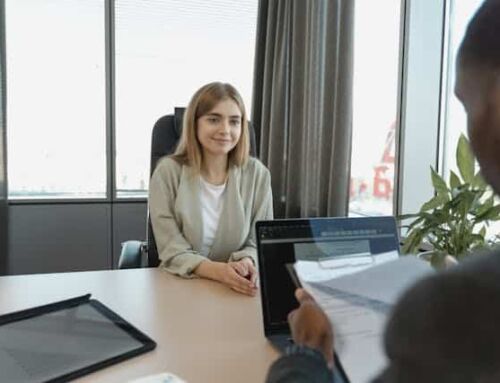In recent years, the pandemic, technological advancements, and our economy have rapidly transformed how we work. Many companies have now shifted from working in traditional office settings to working remotely or straddling a hybrid work arrangement. As such, many companies, managers, and HR professionals have been presented with unique challenges in an attempt to keep workers—especially those working remotely—happy, productive, and included.
A recent study conducted by ExpressVPN, a cybersecurity and virtual private network company, revealed that remote workers feel that the pressure to work outside regular hours has led them to do other tasks on company-issued devices during actual working hours. In their survey, ExpressVPN found that 78 percent of senior managers who work with remote employees expect their employees to undertake tasks outside their allotted working hours. In comparison, only 11 percent say they don’t have such expectations.
When remote workers are expected to do things outside their scheduled working time, this hedges on their personal time, preventing them from running errands and doing their own things. As such, it’s understandable that they’ll use any free time they might have at work to do other things.
Image by Freepik
What HR managers and directors can do
Seeing this, the onus is on HR managers, directors, and other professionals to navigate these challenges to create a thriving and productive remote work environment. Below, we explore some practical tips and strategies that HR and People managers can use to improve the productivity rates of their remote employees.
1. Lead with clear and impactful communication
In a remote work setting, communication is essential in keeping productivity levels healthy within a team. As an HR professional, make it a point to train people managers to use communication tools like Slack, Microsoft Teams, Zoom, or Google Meet to create clear communication lines with remote workers.
By regularly checking in with your team, people managers can receive updates on tasks and encourage team members to share their thoughts, issues, and ideas. Remember that the lack of face-to-face interaction can sometimes lead to misunderstandings, so ensure your messages are clear, concise, and constructive.
HR managers can also make it a point to hold town hall meetings and Q&A sessions to clear any misunderstandings and answer any employees’ questions. Town halls are a great way to communicate ongoings in the workplace with remote employees.
2. Set clear expectations of employees and their time
In remote work, employees might struggle with understanding their responsibilities and deliverables due to a lack of in-person supervision. As mentioned earlier, because some employees feel the need to work outside their allotted hours, they might not be aware of what’s really expected of them.
It’s crucial to set clear expectations for both individual and team roles. Outline job responsibilities, set deadlines, and make sure everyone understands their tasks and the standard of work expected from them. Once you’ve set these rules in place, leave your employees to do their best work on their own time. However, conduct regular feedback sessions and schedule follow-ups to ensure everyone is on the same page.
3. Provide support with productivity tools and tips
There are various productivity tools available that can make remote work easier and more efficient. These include project management tools like Jira, Trello, and Asana, time tracking tools like Harvest, and collaborative platforms like Google Workspace.
These tools can help keep remote workers on track while working on tasks daily. Project managers and those involve
4. Encourage work-life balance and provide emotional support
While it might seem counterintuitive, promoting a healthy work-life balance can actually increase productivity. Again, this aligns with communicating expectations to your employees and ensuring they know what’s required of them. Employees who feel their personal lives are valued are more likely to be satisfied and productive at work. Encourage employees to take regular breaks, discourage after-hours work emails, and foster an environment where mental health is prioritized, as some studies showed remote work negatively impacts mental well-being.
5. Foster a culture of trust to avoid micromanagement
Trust is the foundation of a productive remote team. Employees who feel trusted are more likely to take ownership of their work, leading to increased productivity. Avoid micromanaging, and instead, empower your employees to make decisions and take responsibility for their tasks. This promotes productivity and helps employees feel more engaged and committed to their work.
In addition, recognize and reward employees for their efforts and achievements. Regularly acknowledging and rewarding your employees’ hard work can increase morale and productivity.
This could be as simple as a shout-out in a team meeting, a note of thanks, or more tangible rewards like bonuses or gift cards.
6. Provide growth opportunities
Continuous learning and development are essential for maintaining a productive team. Regular training sessions not only improve the skills of your team members but also keep them engaged and motivated. Consider providing resources for professional development, such as online courses, webinars, and workshops. In addition, find out if there are skills that your employees might want to grow into and benefit from. For example, if an employee has expressed interest in project management, it’s up to them and their people managers to work towards carving a path for the employee to obtain these skills.
Conclusion
Improving productivity in a remote work setting is a challenging task. It requires a keen understanding of the unique dynamics of remote work, a strong focus on communication, and the use of effective tools and strategies.
As an HR manager, director, or people manager, you are uniquely positioned to guide your team and company toward greater productivity. By implementing these strategies, you can foster a remote work environment that is not only productive but also engaging, satisfying, and sustainable.







Leave A Comment